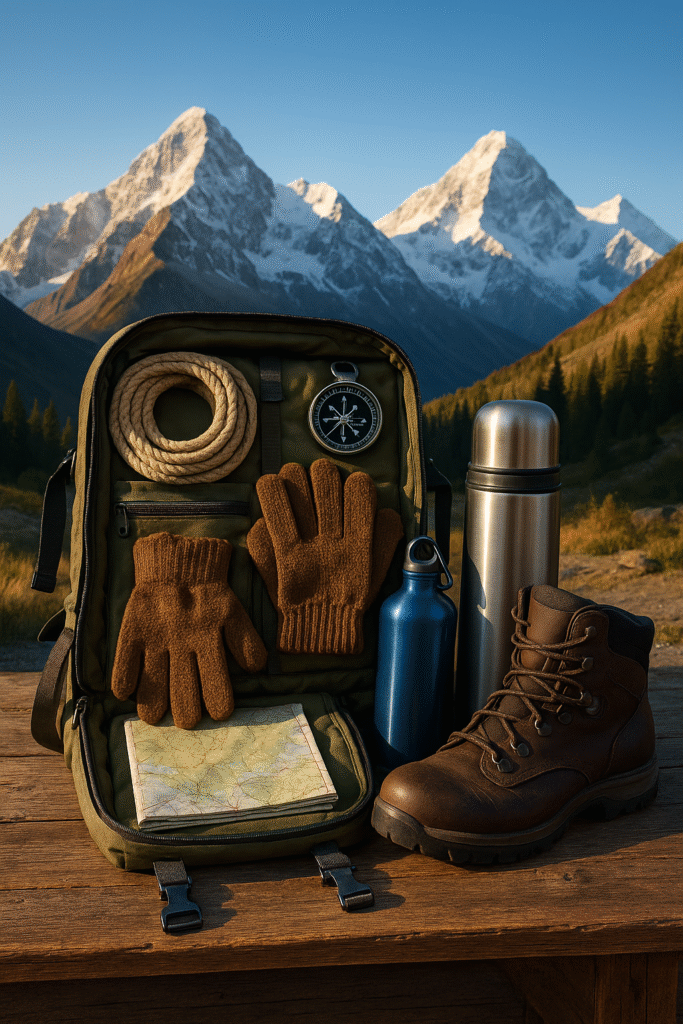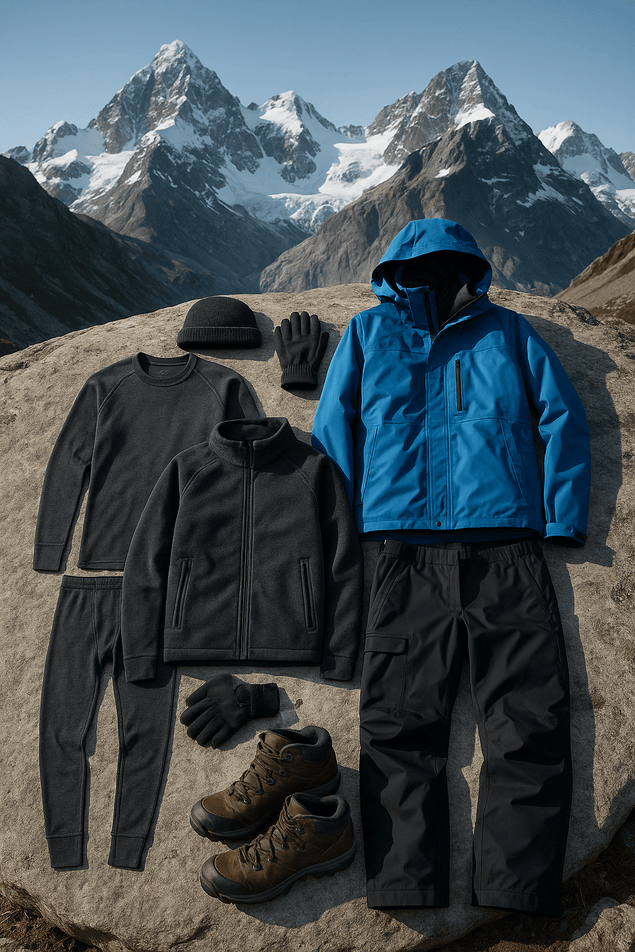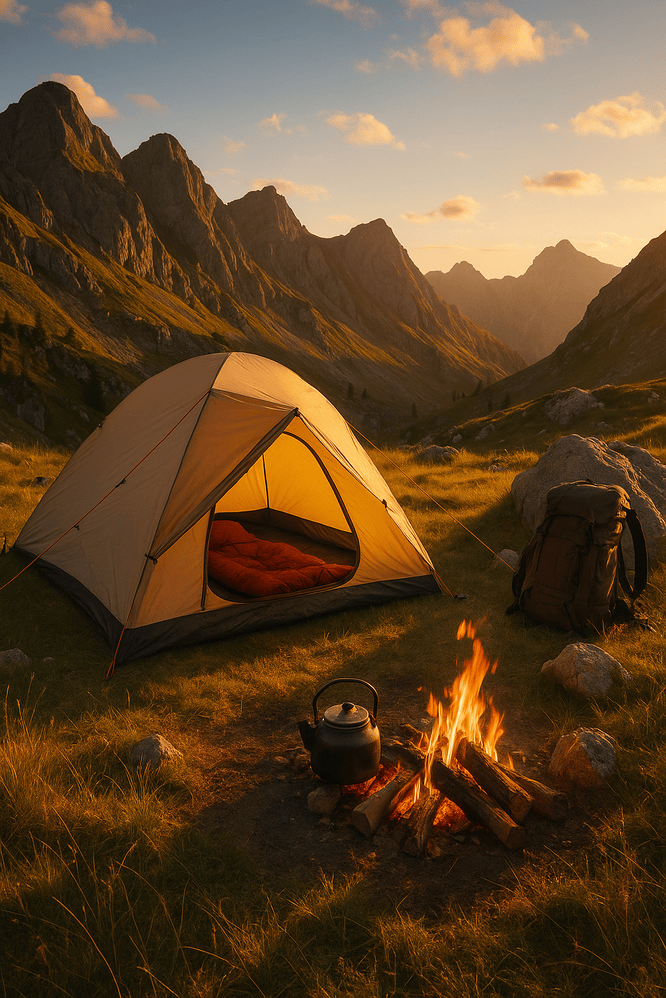The biting wind cut through my jacket like a knife as I stood at 12,000 feet, watching the sunrise paint the Himalayas in shades of gold and crimson. But what should have been a magical moment turned into a scramble for survival when I realized I’d forgotten my emergency whistle and my phone battery had died overnight. That morning taught me a lesson I’ll never forget: the mountains don’t forgive poor preparation.

Mountain travel is unlike any other adventure. The terrain is unpredictable, weather conditions can change in minutes, and help might be hours away. Whether you’re planning a weekend trek in the Rockies or a multi-day expedition in the Andes, having the right gear can mean the difference between an unforgettable experience and a dangerous situation.
After five years of mountain adventures across four continents, I’ve learned that successful mountain travel comes down to one fundamental principle: preparation. The things to carry while travelling to mountains aren’t just suggestions—they’re your lifeline to safety and enjoyment in some of the world’s most breathtaking yet challenging environments.
Essential Clothing and Layering System
The foundation of any mountain adventure lies in your clothing choices. Mountains are notorious for their rapidly changing weather conditions, and your clothing system needs to adapt accordingly.
Base Layer Essentials
Start with moisture-wicking base layers made from merino wool or synthetic materials. These regulate your body temperature and keep sweat away from your skin. Pack at least two sets—one to wear and one as backup. Cotton is your enemy in the mountains; it retains moisture and loses insulation properties when wet.
Insulation Layer
Your mid-layer should provide warmth while allowing moisture to escape. Down jackets are excellent for dry conditions, while synthetic insulation performs better in wet environments. A fleece or softshell jacket offers versatility for changing conditions.
Outer Shell Protection
A waterproof, breathable jacket and pants are non-negotiable items among the things to carry while travelling to mountains. Look for gear with sealed seams and adjustable hoods. Even if the forecast looks perfect, mountain weather can turn hostile without warning.

Navigation and Safety Equipment
Getting lost in the mountains isn’t just inconvenient—it can be deadly. Your navigation toolkit should include both digital and analog backup options.
Digital Navigation Tools
A GPS device with preloaded topographic maps is invaluable, but don’t rely solely on technology. Smartphone apps like AllTrails or Gaia GPS work well, but remember that batteries drain faster in cold weather and signals can disappear in remote areas.
Traditional Navigation Backup
Always carry a physical topographic map and compass as backup. Know how to use them before you need them. A waterproof map case protects your navigation tools from the elements.
Emergency Communication
A personal locator beacon (PLB) or satellite communicator can summon help when cell service fails. These devices are particularly crucial when venturing into remote areas where rescue might take hours or days.
Nutrition and Hydration Essentials
Mountain environments demand more from your body, making proper nutrition and hydration critical components of your gear list.
Water Storage and Purification
Carry more water than you think you need, but also pack water purification tablets or a portable filter. Dehydration happens quickly at altitude, and natural water sources may contain harmful bacteria or parasites.
High-Energy Food Selection
Pack calorie-dense foods that provide sustained energy. Nuts, dried fruits, energy bars, and jerky are excellent choices. Don’t forget electrolyte replacement options—altitude and exertion deplete your body’s mineral stores rapidly.
According to Outside Magazine, mountain athletes should consume 300-400 calories per hour during intense activity at altitude.
Sleep and Shelter Systems
Sleeping Gear
Your sleeping system needs to handle the conditions you’ll encounter. A sleeping bag rated 10-15 degrees below the expected low temperature ensures warmth even if conditions deteriorate. Pair it with an insulated sleeping pad that provides both cushioning and crucial insulation from the cold ground.
Emergency Shelter
Even on day trips, carry emergency shelter options. A lightweight bivy sack or emergency blanket can provide life-saving protection if you’re caught in unexpected weather or need to spend an unplanned night outdoors.

First Aid and Medical Supplies
Mountain environments present unique medical challenges, from altitude sickness to traumatic injuries from falls or rockfall.
Comprehensive First Aid Kit
Your mountain first aid kit should go beyond basic band-aids. Include altitude sickness medication, blister treatment, pain relievers, and supplies for treating cuts, sprains, and burns. Know how to use everything in your kit.
Personal Medications
Bring extra prescription medications in waterproof containers. High altitude can affect how your body processes certain drugs, so consult your doctor before departure.
Tools and Utility Items
Multi-tool or Knife
A quality multi-tool serves countless purposes, from gear repairs to food preparation. Choose one with pliers, scissors, and a sharp blade.
Repair Kit
Duct tape, gear patches, and basic sewing supplies can fix equipment failures that might otherwise end your trip. A small tube of seam sealer can waterproof gear on the go.
Illumination
Headlamps are essential, but always carry backup lighting. Include extra batteries stored separately from your devices.
Weather Protection and Sun Safety
Mountain environments expose you to intense UV radiation, especially at high altitudes where the atmosphere provides less protection.
Sun Protection
High-SPF sunscreen, lip balm with SPF, and quality sunglasses aren’t optional. Snow blindness can occur even on cloudy days due to reflected UV rays.
Weather Monitoring
A portable weather radio or barometric altimeter helps you monitor changing conditions and make informed decisions about route changes or shelter.
Conclusion
The things to carry while travelling to mountains represent more than just a packing list—they’re your insurance policy for safe, enjoyable adventures in some of Earth’s most spectacular environments. Every item serves a purpose, whether it’s keeping you warm, fed, hydrated, or safe.
Remember that the best gear is useless without the knowledge to use it properly. Practice with your equipment before heading into the mountains, and always inform someone of your planned route and expected return time.
The mountains will always be there, but the memories you create—and your ability to create them safely—depend on proper preparation. Don’t let a forgotten essential turn your dream adventure into a survival story.
Frequently Asked Questions
Q: What’s the most important thing to carry while travelling to mountains? A: While all safety gear is crucial, a comprehensive first aid kit and emergency shelter are arguably the most important things to carry while travelling to mountains. These items can literally save your life in emergency situations when help is hours away.
Q: How much water should I carry for mountain hiking? A: Carry at least 2-3 liters of water per person per day, plus water purification methods. At high altitudes, dehydration occurs faster, and you’ll need more water than you would at sea level.
Q: Do I need special boots for mountain travel? A: Yes, proper mountain boots are essential. They should provide ankle support, waterproofing, and appropriate traction for the terrain. The specific type depends on your activity—hiking boots for trails, mountaineering boots for technical terrain.
Q: What should I do if I forgot something important from my mountain travel checklist? A: Never proceed with dangerous gaps in your gear. Either purchase or rent missing essential items, or postpone your trip. The mountains will still be there when you’re properly prepared.
Ready to plan your next mountain adventure? Download our complete Mountain Travel Gear Checklist PDF and join our newsletter for expert tips, destination guides, and exclusive travel stories from the world’s most incredible peaks. Your next summit awaits—let’s make sure you’re ready for it.







